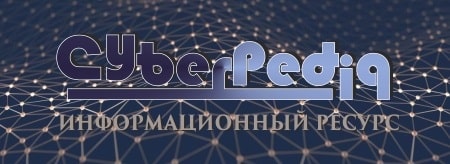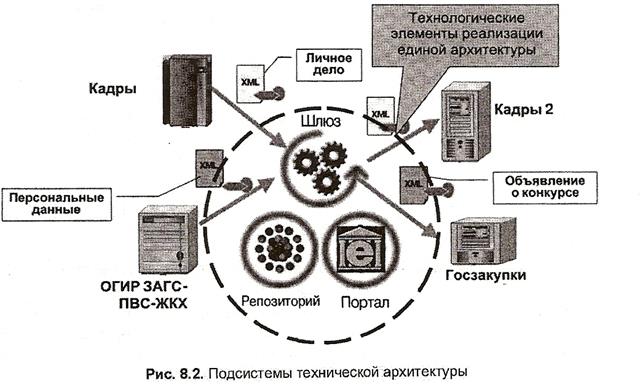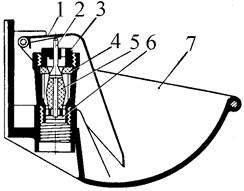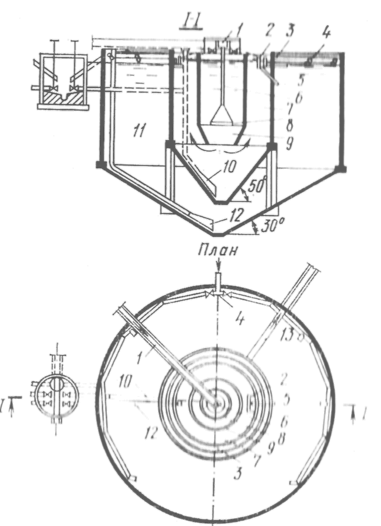Answer the questions:
- Why had Internet technology caused problems for some local businesses?
- Why do QR codes help increase leads, sales and profits?
Exercise 6. Make the tapescript of the video from the previous exercise.
Exercise7. Don’t translate like this!
1. Peter Thiel, the founder of PayPal, has stated that PayPal is not a bank because it does not engage in fractional-reserve banking
2. PayPal co-founder Max Levchin is launching a new mobile-based online payments system called Affirm and it will offers its users credit, according to Все цифровые вещи. Affirm will use Facebook as its authentication method and will use another company Levchin has invested in—Stripe—to process its credit card payments.
1. Питер Тиль, основатель ПлатиДруг, заявил, что ПлатиДруг не является банком, поскольку он не занимается с частичным резервированием банковской.
2. Соучредитель услуги ПлатиДруг Макс Левчин запускает новый мобильный на основе системы онлайн-платежей называется утверждение и оно будет предлагает своим пользователям кредита согласно All Things Digital. Подтверждают будет использовать Facebook в качестве метода аутентификации и будет использовать другую компанию Левчина инвестировала – Полоса-обрабатывать его платежи по кредитным картам.
Give your translation variant.
UNIT 14. Cloud
Microsoft described the next big thing through the following five focus areas: riding the next-generation platform wave, inspiring developer delight, powering breakthrough departmental applications, enabling emerging trends such as cloud computing, and democratizing application life-cycle management (ALM)
Cloud computing is a colloquial expression used to describe a variety of different computing concepts that involve a large number of computers that are connected through a real-time communication network (typically the Internet). Cloud computing is a jargon term without a commonly accepted non-ambiguous scientific or technical definition. In science, cloud computing is a synonym for distributed computing over a network and means the ability to run a program on many connected computers at the same time. The popularity of the term can be attributed to its use in marketing to sell hosted services in the sense of application service provisioning that run client server software on a remote location
The cloud computing is mostly used to sell hosted services in the sense of Application Service Provisioning that run client server software on a remote location. Such services are given popular acronyms like 'SaaS' (Software as a Service), 'PaaS' (Platform as a Service). End users access cloud-based applications through a web browser or a light-weight desktop or mobile app while the business software and user's data are stored on servers at a remote location.
On the other hand, autonomic computing automates the process through which the user can provision resources on-demand. By minimizing user involvement, automation speeds up the process and reduces the possibility of human errors.
Users face difficult business problems every day. Cloud computing adopts concepts from Service-oriented Architecture (SOA) that can help the user break these problems into services that can be integrated to provide a solution. Cloud computing provides all of its resources as services, and makes use of the well-established standards and best practices gained in the domain of SOA to allow global and easy access to cloud services in a standardized way.
Cloud computing also leverages concepts from utility computing in order to provide metrics for the services used. Such metrics are at the core of the public cloud pay-per-use models. In addition, measured services are an essential part of the feedback loop in autonomic computing, allowing services to scale on-demand and to perform automatic failure recovery.
Cloud computing is a kind of grid computing; it has evolved from grid computing by addressing the QoS (quality of service) and reliability problems. Cloud computing provides the tools and technologies to build data/compute intensive parallel applications with much more affordable prices compared to traditional parallel computing techniques.
Cloud computing shares characteristics with:
· Client–server model — Client–server computing refers broadly to any distributed application that distinguishes between service providers (servers) and service requesters (clients).
· Grid computing — "A form of distributed and parallel computing, whereby a 'super and virtual computer' is composed of a cluster of networked, loosely coupled computers acting in concert to perform very large tasks."
· Mainframe computers — Powerful computers used mainly by large organizations for critical applications, typically bulk data processing such as census, industry and consumer statistics, police and secret intelligence services, enterprise resource planning, and financial transaction processing.
· Utility computing — The "packaging of computing resources, such as computation and storage, as a metered service similar to a traditional public utility, such as electricity.
· Peer-to-peer means distributed architecture without the need for central coordination. Participants are both suppliers and consumers of resources (in contrast to the traditional client–server model).
In the business model using software as a service (SaaS), users are provided access to application software and databases. Cloud providers manage the infrastructure and platforms that run the applications. SaaS is sometimes referred to as "on-demand software" and is usually priced on a pay-per-use basis. SaaS providers generally price applications using a subscription fee.
In the SaaS model, cloud providers install and operate application software in the cloud and cloud users access the software from cloud clients. Cloud users do not manage the cloud infrastructure and platform where the application runs. This eliminates the need to install and run the application on the cloud user's own computers, which simplifies maintenance and support.
In the PaaS model, cloud providers deliver a computing platform typically including operating system, programming language execution environment, database, and web server. Application developers can develop and run their software solutions on a cloud platform without the cost and complexity of buying and managing the underlying hardware and software layers. With some PaaS offers, the underlying computer and storage resources scale automatically to match application demand such that cloud user does not have to allocate resources manually.
Users access cloud computing using networked client devices. Many cloud applications do not require specific software on the client and instead use a web browser to interact with the cloud application. With Ajax and HTML5 these Web user interfaces can achieve a similar, or even better, look and feel to native applications. Some cloud applications, however, support specific client software dedicated to these applications (e.g.,virtual desktop clients and most email clients). Some legacy applications (line of business applications that until now have been prevalent in thin client computing) are delivered via a screen-sharing technology
A cloud is called a 'Public cloud' when the services are rendered over a network that is open for public use. Technically there is no difference between public and private cloud architecture, however, security consideration may be substantially different for services (applications, storage, and other resources) that are made available by a service provider for a public audience and when communication is effected over a non-trusted network. Generally, public cloud service providers like Amazon AWS, Microsoft and Google own and operate the infrastructure and offer access only via Internet (direct connectivity is not offered)
Hybrid cloud is a composition of two or more clouds (private, community or public) that remain unique entities but are bound together, offering the benefits of multiple deployment models. Such composition expands deployment options for cloud services, allowing IT organizations to use public cloud computing resources to meet temporary needs. This capability enables hybrid clouds to employ cloud bursting for scaling across clouds.
Cloud bursting is an application deployment model in which an application runs in a private cloud or data center and "bursts" to a public cloud when the demand for computing capacity increases. A primary advantage of cloud bursting and a hybrid cloud model is that an organization only pays for extra compute resources when they are needed.
Cloud bursting enables data centers to create an in-house IT infrastructure that supports average workloads, and use cloud resources from public or private clouds, during spikes in processing demands.
By utilizing "hybrid cloud" architecture, companies and individuals are able to obtain degrees of fault tolerance combined with locally immediate usability without dependency on internet connectivity. Hybrid cloud architecture requires both on-premises resources and off-site (remote) server-based cloud infrastructure.
To comply with regulations including FISMA, HIPAA, and SOX in the United States, the Data Protection Directive in the EU and the credit card industry's PCI DSS, users may have to adopt community or hybrid deployment modes that are typically more expensive and may offer restricted benefits. Many providers also obtain a SAS 70 Type II audit, but this has been criticised on the grounds that the hand-picked set of goals and standards determined by the auditor and the auditee are often not disclosed and can vary widely
Most cloud providers expose APIs that are typically well-documented (often under a Creative Commons license) but also unique to their implementation and thus not interoperable. Some vendors have adopted others' APIs and there are a number of open standards under development, with a view to delivering interoperability and portability.
· In December 2012, a study released by Microsoft and the International Data Corporation (IDC)showed that millions of cloud-skilled workers would be needed. Millions of cloud-related IT jobs are sitting open and millions more will open in the coming couple of years, due to a shortage in cloud-certified IT workers.
· In February 2013, the BonFIRE project launched a multi-site cloud experimentation and testing facility. The facility provides transparent access to cloud resources, with the control and observability necessary to engineer future cloud technologies, in a way that is not restricted, for example, by current business models.
Choose the correct answer:
1. Cloud computing involves a large number of computers that are connected through:
a. delayed time;
b. a real-time communication network.
c. E-mail protocols
2. Cloud computing is
a. a jargonism
b. a scientific term
c. an archaic word
3. Cloud computing means:
a. the ability to run a program on many connected computers at the same time
b. the ability to run a program on two connected computers at the same time
c. the ability to connect many computers at the same time
4. 'SaaS' means:
a. Software Access Ability System
b. Software as a System
c. Software as a Service
5. 'PaaS' means:
a. Platform as a Service
b. Protocol as a System
c. Protocol as a Service
Answer the questions:
1. What does client-server computing refer to?
2. What are mainframe computers used for?
3. What are computing resourses?
4. What does peer-to-peer mean?
5. When a cloud is called “a Public Cloud”?
6. What does hybrid cloud allow IT organizations?
7. What’s the primary advantage of cloud bursting and a hybrid cloud model?
For discussion: http://www.computer.org/portal/web/computingnow/videos/trendwars
EXERCISES TO UNIT 14:






